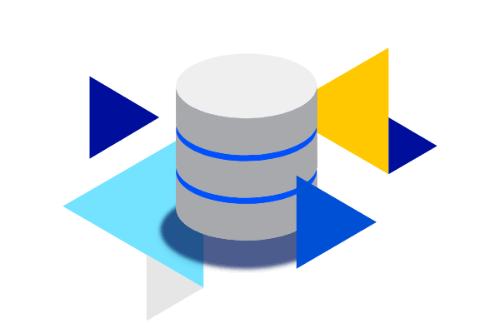What is mongodb ?
MongoDB is a source-available cross-platform document-oriented database program classified as a NoSQL database. It uses JSON-like documents with optional schemas and is developed by MongoDB Inc.
Instead of using tables and rows like traditional relational databases, MongoDB uses collections and documents. Documents consist of key-value pairs, which are the basic units of data in MongoDB, and collections contain sets of documents.

MongoDB is therefore designed for high-volume data storage and is suitable for working with large sets of distributed data.
MongoDB supports various programming languages, including C, C++, C#, Go, Java, Python, Ruby, and Swift. Features include ad hoc queries, indexing, load balancing, aggregation, server-side JavaScript execution, high availability through built-in replication and failover, and horizontal scalability with native sharding.
How does MongoDB work?
MongoDB is what’s called a NoSQL database. NoSQL, standing for "not only SQL," represents a database management approach that goes beyond SQL to accommodate a variety of data models, including documents as well as columnar, graph, and key-value formats.
Unlike traditional relational databases that rely on structured table formats, NoSQL databases employ alternative data storage and retrieval methods. These databases have gained popularity, particularly in the realm of Big Data. NoSQL databases also serve a purpose in high-volume web, cloud, and mobile applications.
NoSQL implementation in MongoDB
In MongoDB, data is stored in documents, which are similar to JSON objects. These documents are composed of field and value pairs and can include other documents, arrays, and arrays of documents. This structure corresponds to native data types in many programming languages, reducing the need for expensive joins and supporting fluent polymorphism.
Documents are stored in collections, which are analogous to tables in relational databases. Unlike tables in relational databases, collections in MongoDB do not enforce a schema, meaning documents within a collection can have different fields.
MongoDB uses a variety of storage engines, allowing you to choose the one most suited to your application. It also uses a journal, a log that helps the database recover in the event of a hard shutdown.
Efficiency, availability, scalability
Indexes are used to improve the efficiency of read operations by reducing the amount of data that query operations need to process. The MongoDB query planner chooses and caches the most efficient query plan given the available indexes.
MongoDB also provides high availability through its replication facility, called a replica set, which is a group of MongoDB servers that maintain the same data set, providing redundancy and increasing data availability.
The database also supports horizontal scalability, allowing you to grow your database by adding more machines to handle increased load. It also supports a distributed systems design, allowing you to intelligently put data where you want it.
Why use MongoDB?
MongoDB is well-suited for a variety of cloud database use cases due to its flexible data model, high read and write throughput, automatic failover capability, and support for multiple concurrent queries, indexing, and aggregation. Here are some of the best use cases for MongoDB:
Modern web applications
MongoDB is ideal for building scalable, data-driven web applications. Its document-oriented data model and persistence strategies are designed for high read and write throughput, making it a good fit for applications that require high performance and scalability.
Artificial intelligence, edge, IoT
MongoDB's flexible data model and scalability make it a good choice for AI, edge computing, and IoT applications, which often involve handling large volumes of diverse data.
Big data applications
MongoDB is also a preferred option for big data applications due to its ability to handle a wide variety of data formats, support for real-time analysis, high-speed data ingestion, low-latency performance, flexible data model, easy horizontal scale-out, and powerful query language.
Single view applications
With a flexible schema and ability to aggregate data from various sources, MongoDB makes it simple to create a single view of data from multiple sources.
Real-time data analytics
Users of MongoDB can analyse any data in place and deliver insights in real-time. This allows businesses to react more quickly to market trends, detect and prevent potential problems, and provide more personalized customer experiences.
Some also argue that MongoDB's ability to handle large volumes of data and perform real-time analytics makes it a good choice for personalization use cases, where understanding user behaviour and providing personalized experiences is key.
What are the advantages of MongoDB?
MongoDB's data storage philosophy is simple and immediately understandable to anybody, even those without programming experience. It stores data in collections with no enforced schema, making it particularly suitable for developers who may not be database experts. Nonetheless, there are also plenty of technical advantages to using MongoDB:
Scalability
MongoDB is designed from the ground up to be a distributed database. It can be scaled within and across multiple distributed data centres, providing new levels of availability and scalability previously unachievable with relational databases like MySQL.
Performance
As a database, MongoDB relies heavily on RAM for storage, allowing quicker performance while executing queries. Wherever possible MongoDB collects the data directly from the RAM than the hard disk, and database requests come back faster as a result.
Developer-friendly
MongoDB documents map naturally to modern, object-oriented programming languages. Using MongoDB removes the complex object-relational mapping (ORM) layer that translates objects in code to relational tables.
High availability
Attributes like replication and gridFS increase data availability. It is also easy to access documents using indexing.
It’s also worth noting that MongoDB has a large and mature platform ecosystem with a worldwide community of developers and consultants, making it easy to get help. It also has an enterprise-grade support offering.
Difference between MongoDB & RDBMS
MongoDB and RDBMS (Relational Database Management System) are both types of databases, but they differ significantly in their structure, scalability, data handling, and use cases.

Data Structure and Query Language
RDBMS uses a structured data model where data is stored in tables with rows and columns. Each table has a primary key to uniquely identify rows and foreign keys to establish relationships between tables. SQL (Structured Query Language) is used to query databases in RDBMS.
On the other hand, MongoDB is a document-oriented database that stores data in BSON (Binary JSON) format, which is a binary style of JSON documents. It does not use SQL but instead uses MongoDB Query Language (MQL), designed for easy use by developers. MongoDB's data model allows for high flexibility as a collection can contain documents with different fields and data types.
Scalability
RDBMS is vertically scalable, which means performance can be improved by increasing server resources like RAM. However, it's not designed for horizontal scalability, which involves distributing data across multiple servers.
MongoDB, in contrast, is both vertically and horizontally scalable. It can handle high-volume data storage and is designed to distribute data across multiple servers, making it suitable for large-scale applications.
Data handling and performance
RDBMS is suitable for handling structured data with strong relationships and provides a high level of information security. It supports complex joins and focuses on ACID properties (Atomicity, Consistency, Isolation, Durability).
MongoDB is suitable for handling unstructured or semi-structured data and is particularly effective for hierarchical data storage. It does not support complex joins and focuses on the CAP theorem (Consistency, Availability, and Partition tolerance). MongoDB is generally faster than RDBMS due to its ability to store related data together, which often makes data retrieval quicker.
Use Cases
RDBMS is typically a good choice for applications with structured data and strong relationships, such as financial systems, where data integrity and transactions are critical.
MongoDB is more suitable for use cases like content management systems, real-time analytics, and agile development, where data schemas may evolve, and scalability is a key requirement.
The choice between MongoDB and RDBMS depends on the specific requirements of the application, including the nature of the data, the need for scalability, and the type of operations to be performed on the data.

Comparing MongoDB to other databases
MongoDB vs. MySQL
MongoDB, an open-source NoSQL database, is known for its flexibility in storing unstructured data using collections and documents, and it supports a variety of features like replication, ad-hoc queries, sharding, and load balancing.
MySQL, on the other hand, is an open-source relational database favoured for its structured data storage in rows and columns, offering features like replication, security, performance schema, and backup.
The comparison covers ease of use, scalability, security, and speed, highlighting MongoDB's advantages in scalability and speed due to its horizontal scaling and efficient handling of unstructured data. MySQL is noted for its suitability in applications requiring high referential integrity and security. The choice between MongoDB and MySQL depends on specific business needs and use cases.
MongoDB vs. Cassandra
Cassandra, developed by Facebook and maintained by the Apache Software Foundation, excels in handling high volumes of data and offers high availability and scalability without a fixed schema. MongoDB, developed by MongoDB Incorporated, is known for storing large amounts of JSON data and allows flexible schemas.
Performance-wise, Cassandra outperforms in write operations due to its multi-primary node support, while MongoDB shines in read performance and secondary index support, especially for nested objects.
Both databases scale well, but differ in architecture, with Cassandra employing a ring structure where each node is active, and MongoDB using a primary/secondary node system. MongoDB offers a rich aggregation framework and a wider variety of data types, whereas Cassandra requires add-ons for aggregation and has more limited data types. Security features are comparable in both, but licensing differs, with MongoDB using a multi-license system and Cassandra under the Apache License v2.0. Use cases vary: Cassandra is ideal for write-heavy workloads and geographically distributed data, while MongoDB is suited for big data workloads, content management, and analytics.

MongoDB, managed in a trusted cloud
Reduce your time to market and free your developers from onerous infrastructure administration tasks, so they can focus on innovation. We handle the setup, maintenance, backup, security and monitoring of your MongoDB databases.

Managed Databases for MySQL
In just a few clicks, deploy the most popular open-source relational database engine. With OVHcloud, you get a fully-managed service for your MySQL database. This gives you more control over your data for e-commerce projects and applications. We manage your service — from configuration, maintenance and backup to high availability and updates. This means you can focus on developing your application features with total peace of mind.